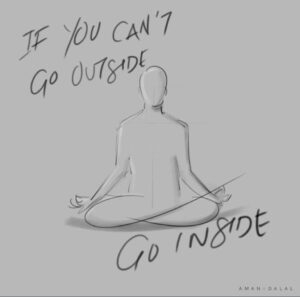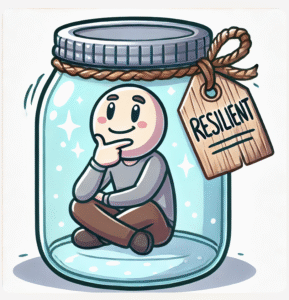We’ve all had moments where we said something we didn’t mean, or spoke in a way that we later regretted. So, this month, I want to normalize and reframe this kind of experience, and share a three-step process that can repair the damage after a rupture. This repair process is based on the work of Dr. Becky Kennedy, a psychologist, author, and founder of the Good Inside approach, whose rupture-repair framework offers leaders a practical, science-backed way to rebuild trust after conflict. Her work shows that accountability, curiosity, and connection can transform moments of conflict into opportunities for trust and growth.
So, what is a rupture? A rupture is any moment where trust, connection, or communication breaks down, even unintentionally. Ruptures are normal.
A few examples of ruptures include interrupting, dismissing, or shutting someone down; being reactive under pressure; or avoiding a tough conversation.
What defines great leadership – whether at work, with friends and family, or in our communities – is what happens next – the repair process.
Repair matters, because done with care, it restores psychological safety, trust and openness, collaboration, and emotional regulation.
When we move from rupture to repair, we pause and regulate ourselves so that we can shift our perspective from blaming others and beating ourselves up to recognizing that ruptures are inevitable – and opportunities for connection and growth.
The secret ingredient of the repair process to start with the MGI: the most generous interpretation of what just happened versus jumping to negative assumptions. We offer the MGI to ourselves and others when there is a rupture. This allows us to see the best in ourselves and others, and to listen and create connection.
It’s important to note that MGI doesn’t mean ignoring boundaries or letting harmful behavior go unaddressed. It means pausing, reflecting, and responding with curiosity and compassion rather than harsh criticism, while still honoring boundaries when needed.
The Principles of Effective Repair
- Separation of Person and Behavior: Recognize that the person is good inside and that the behavior is a sign of overwhelm, stress, or an unmet need.
- Choose Curiosity Instead of Judgment: Instead of “Why are you being a jerk?”, ask “What might be going on for the other person right now?” or “What are they feeling or trying to manage?”
- Two Truths Can Coexist: The person can be good inside, and their behavior can be problematic or hurtful.
- Mindset Shift: Because of our innate negativity bias, we tend to default to the least generous interpretation. This framework offers an opportunity to develop a new skill – engaging with people in a more respectful, connected, and productive way.
- Practical Question: When triggered by someone’s behavior, pause and ask: “What’s my most generous interpretation of that behavior right now?”
The Three Steps of the Repair
STEP 1: The Rupture
This step involves self-awareness: you notice that you said something hurtful or reacted in a way that you regret.
STEP 2: Repair With Yourself (internally)
Most people are never taught this step. It involves self-reflection and kindness toward yourself. It’s important to understand that you’re a good person who made a mistake. You might think or say to yourself something like, “I’m a good person. I made a mistake. I’m not special – mistakes happen to everyone. This behavior doesn’t define me, and I’m going to try to act differently.”
Get curious rather than defensive and focus on regulating your emotions. Find compassion, grounding, and connection within yourself so that you can be present for the other person.
STEP 3: Repair With the Other Person
A repair includes naming what happened, taking responsibility for your behavior, and acknowledging the impact it had on someone else. Bonus points for sharing what you will do differently next time.
Apology + Impact + Forward Intention
“I’m sorry for the way I spoke to you earlier (apology). I imagine my words and tone may have felt dismissive, and I regret that (impact). Next time, before I respond, I’ll focus on slowing down, pausing, and engaging in a more respectful and kind way (forward intention).”
Common Pitfalls to Avoid
- Defending your behavior
- Blaming the other person
- Over-apologizing
- Pretending it didn’t happen
- Justifying your intent
When Not to Repair Immediately or Not At All
- Delay the repair if you are emotionally dysregulated, angry, flooded, or defensive.
- Also delay, or do not attempt, a repair if a serious boundary has been crossed and your physical and/or emotional safety is at risk.
In Closing
I invite you this month to try meeting ruptures with awareness rather than urgency. Pause, acknowledge what occurred, regulate yourself, and move toward repair. Choosing the most generous interpretation (MGI) of your own and others’ behavior helps rewire our natural tendency to assume the worst, strengthens presence, and supports you in remaining calm during moments of tension. The good news is that once you realize you’ve ruptured a relationship, you’re already a third of the way toward repair!
For Deeper Dive: Click here for How to Repair the Damage After an Argument with Dr. Becky Kennedy on 10% Happier with Dan Harris (32 minutes).





